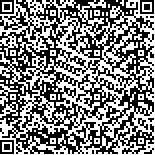| 引用本文: | 王举,姚华栋,蒋国荣,何金海,阎俊岳,郑静,陈奕德.南海北部海区太阳辐射观测分析与计算方法研究.海洋与湖沼,2005,36(5):385-393. |
| |
|
| |
|
|
| 本文已被:浏览 2669次 下载 2758次 |

码上扫一扫! |
|
|
| 南海北部海区太阳辐射观测分析与计算方法研究 |
|
王举1,2, 姚华栋3, 蒋国荣1,4, 何金海1, 阎俊岳3, 郑静4, 陈奕德4
|
|
1.南京气象学院大气科学系 南京210044;2.解放军理工大学气象学院南京211101;3.中国气象局国家气候中心 北京100081;4.解放军理工大学气象学院 南京211101
|
|
| 摘要: |
| 利用2000年与2002年南海海气通量观测资料及同期西沙站资料,研究分析了4—6月份南海北部海区太阳总辐射与云量以及日照时间等因子的对应关系。研究发现,日均太阳辐射与日总日照时间对应关系最好,依次是低云量、总云量。据此首先利用2000年资料建立了除考虑云量外还包括日总日照时间的计算日均太阳辐射的估计公式,并利用2002年观测资料进行独立检验。误差分析结果表明,包括日总日照时间的经验公式远优于单纯考虑云量的计算公式,误差减少了近50%。最后,应用该经验公式对观测期间缺测段资料进行了补插及外推估算,分析了2000年与2002年南海季风爆发前后太阳辐射的一些变化特征,估算结果表明,季风爆发前太阳辐射日均值缓慢增加并始终处于较高值。 |
| 关键词: 南海 海气通量观测 太阳辐射计算方法 云量 日照时间 |
| DOI: |
| 分类号: |
| 基金项目:国家自然科学基金资助项目,90211011号,40075003号 |
附件 |
|
| ANALYSES AND CALCULATION OF SOLAR RADIATION OVER NORTHERN SOUTH CHINA SEA |
|
WANG Ju,YAO Hua-Dong,JIANG Guo-Rong,HE Jin-Hai,YAN Jun-Yue,ZHENG Jing,CHEN Yi-De
|
|
1.Department of Atmospheric Sciences, Nanjing Institute of Meteorology, Nanjing,210044;2.Meteorological College, PLA Science/Technology University, Nanjing,211101;3.National Climate Center of China Meteorological Administration, Beijing,100081
|
| Abstract: |
| Lack of solar radiation data in the study area limited the theoretical research in simple empirical estimation formula for solar radiation and mostly for climate estimation. But sometimes we are interesting in synoptic scale and short-range climate process, in which daily solar radiation intensity needs to be estimated. This paper dealt with related problems based on the data collected in the marine survey in Xisha Island area (16°50′N, 112°20′E) in 2000 and 2002.
The observation site was located in northern central South China Sea in the fringe of a reef about 300m to the southwest of Yongxing Island. Observation was done in an observatory tower. The solar radiation data were obtained twice in stages between May 8 and June 16 in 2000 (total 40days), and between April 24 and June 21 in 2002 (total 59 days). In this study, we analyzed the total solar radiation and possible influencing factors first, and then determined which factors were better for our calculation. Secondly, we built up empirical estimation formulas that mostly used cloud cover data that is fundamental for maritime meteorological study. We also tried other empirical estimation formula using total solar radiation based on cloud cover. Required corrections, such as vapor correction, were made to our calculations to obtain daily solar radiation data in the area in all possible conditions.
So, firstly we carried on the contrast analysis among the solar total radiation, total cloud cover, lower cloud cover, and sunshine duration. It was found that the total solar radiation was best related to sunshine duration, followed by lower cloud cover and total cloud cover. Secondly, from the sake of calculation, we constructed a formula for getting solar total radiation, parameterized by total cloud cover, lower cloud cover and vapor, by multivariate linear regression out of the observed radiation data in 2000, with necessary error analysis and contrast analysis with the predecessors. We found that vapor correction can only improve the precision a little of total solar radiation. Thirdly, we constructed an estimation formula for solar total radiation out of all the factors above-listed. Error analysis showed that considering sunshine duration in observation area could raise estimation precision for daily solar radiation intensity, which would reduce error by 50%. Finally, we performed an independence test using Year 2002 data and confirmed the reliability of the result above. And we also apply the formula to the estimation for daily variation of the solar total radiation in phases before the SCS monsoon break. It was found that the total solar radiation increase slowly all the times.
In overall, tagging item of observed sunshine duration in calculation for some area is very useful to research daily solar radiation variation, which can greatly enhance the estimation precision for daily solar radiation intensity. |
| Key words: SCS, Air-sea fluxes observation, Calculation method for solar radiat ion, Cloud cover, Sunshine duration |
|
|
|
|
|
